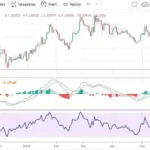The rise of cryptocurrencies has transformed how people think about money — from speculative assets to viable tools for everyday transactions. Yet, one major challenge remains: how can businesses and consumers seamlessly transact between traditional fiat currencies and blockchain-based assets? The answer lies in crypto payment gateways, a crucial innovation that bridges the gap between the old and new worlds of finance.
What Are Crypto Payment Gateways?
Crypto payment gateways are platforms that enable merchants to accept cryptocurrency payments while still operating within the traditional financial system. They convert digital assets like Bitcoin, Ethereum, or stablecoins into local currencies in real time, allowing businesses to avoid the volatility often associated with crypto markets.
For example, a customer might pay for a product using Bitcoin, but the merchant receives the equivalent amount in U.S. dollars or Malaysian ringgit. This conversion happens instantly, providing both convenience and financial stability.
Prominent players in this space include BitPay, CoinGate, CoinPayments, and Binance Pay, each offering different integrations and support for multiple cryptocurrencies.
How Crypto Payment Gateways Work
The process typically involves several key steps:
- Customer Checkout: A buyer chooses to pay in cryptocurrency at a merchant’s online or physical store.
- Payment Processing: The gateway generates a wallet address or QR code for the transaction.
- Conversion: Once the payment is made, the gateway converts the crypto into fiat currency at current exchange rates.
- Settlement: The merchant receives the converted amount directly in their bank account or preferred stablecoin.
This system ensures that both parties benefit — consumers enjoy the flexibility of using digital assets, while merchants are shielded from crypto market fluctuations.
Benefits of Crypto Payment Gateways
- Global Accessibility
Crypto transactions are borderless, making them ideal for international businesses. With payment gateways, companies can accept payments from customers worldwide without worrying about foreign exchange or high transaction fees. - Lower Transaction Costs
Compared to traditional credit card networks or bank transfers, crypto payments often come with lower processing fees, especially for cross-border transactions. - Faster Settlements
Traditional financial systems can take days to process international payments. Blockchain-based gateways enable near-instant settlements, improving cash flow for merchants. - Increased Privacy and Security
Blockchain’s decentralized nature ensures transparency and protection against chargebacks, reducing fraud risks for merchants. - Market Expansion
Accepting crypto can attract a growing demographic of digital-native consumers and early adopters who prefer blockchain-based payments.
Challenges and Considerations
While promising, crypto payment gateways also face several challenges that must be addressed:
- Regulatory Uncertainty: Crypto regulations vary widely across countries, affecting how gateways operate and manage compliance.
- Volatility Risks: Although instant conversion mitigates volatility, some merchants still worry about price swings during transaction processing.
- Technical Integration: Businesses need proper infrastructure to integrate gateways with their e-commerce systems.
- Consumer Awareness: Many customers still lack familiarity with crypto payments, which can limit adoption.
The Rise of Stablecoins and CBDCs
Stablecoins like USDT (Tether) and USDC (USD Coin) are helping make crypto payments more practical. By pegging their value to fiat currencies, they minimize volatility while preserving the benefits of blockchain.
Moreover, the emergence of Central Bank Digital Currencies (CBDCs) could further streamline fiat-to-crypto conversions. Payment gateways may soon evolve to support CBDCs, enabling seamless interoperability between traditional banks and blockchain systems.
The Future of Payments: Convergence, Not Competition
Crypto payment gateways symbolize the convergence of traditional finance (TradFi) and decentralized finance (DeFi). Instead of replacing fiat money, blockchain technology complements it by enhancing efficiency, transparency, and inclusivity.
As global adoption grows, these gateways could become as commonplace as credit card processors — powering a financial system where digital assets and fiat currencies coexist effortlessly.
Conclusion
Crypto payment gateways are more than just transaction tools; they are the connective tissue between two financial worlds. By bridging fiat and blockchain, they empower businesses to reach global customers, reduce costs, and embrace financial innovation without sacrificing stability.
As technology advances and regulations mature, these gateways will play a central role in shaping the future of digital commerce — where payments are instant, borderless, and truly decentralized.














